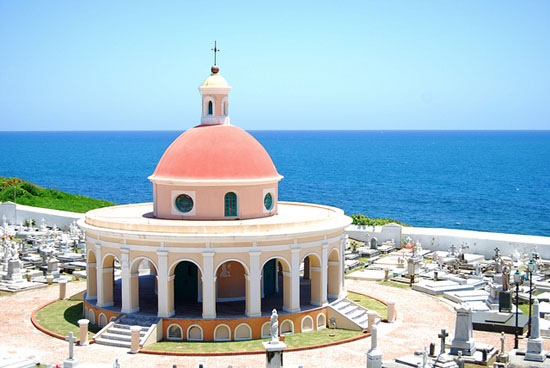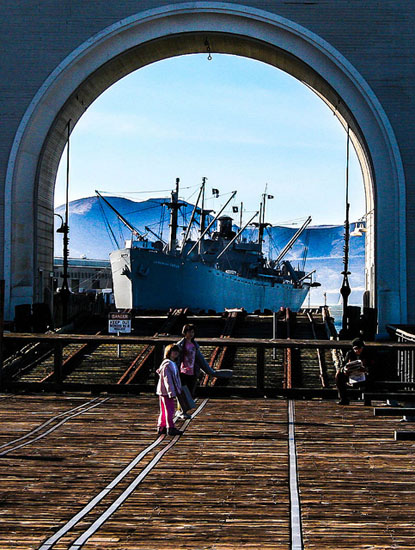Maritime Heritage Program
Home > References & Resources > Lesson Plans
Lesson Plans
Teaching with Historic Places (TwHP), a program of the National Park Service's National Register of Historic Places, uses historic properties to enliven history, social studies, geography, civics, and other subjects. TwHP has created a variety of tools—including lesson plans, publications, and other valuable materials—to help teachers bring historic places into the classroom. All lessons are based on sites listed in the National Register of Historic Places, which include historic units of the National Park System and National Historic Landmarks. Landmarks are nationally significant historic places designated by the Secretary of the Interior because they possess exceptional value or quality in illustrating or interpreting the heritage of the United States. Lessons plans that feature units of the National Park System and National Historic Landmarks are noted.
Among the lessons plans offered are several on varying aspects of maritime history from coastal forts to inland canals and from well-known historical figures to the anonymous faces of early settlers as well as the U.S. Life-Saving Service and the U.S. military. To explore the maritime-related lesson plans, click on the links below.
 |
| Santa María Magdalena de Pazzis Cemetery in the Old San Juan Historic District National Historic Landmark in Puerto Rico. Photo by Kristi Weaver. Permission for NPS use granted via entry in the 2013 National Historic Landmark Photo Contest. |
Attu: North American Battleground of World War II (#7)
Examine military maps and photos to better understand why an isolated battle on a remote island in Alaska alarmed the nation. (National Historic Landmark)
The Battle of Midway: Turning the Tide in the Pacific (#90)
Discover the important role these tiny Pacific islands played in World War II. (National Historic Landmark)
The Building of the Chesapeake and Ohio Canal (#10)
Assess the importance of America's early canal system and its economic and social effects. (National Park)
Decatur House: A Home of the Rich and Powerful (#19)
Inspect Commodore Stephen Decatur's home near the White House, a gathering place for the politically ambitious, and learn why the naval hero felt compelled to fight a fateful duel. (National Historic Landmark)
Digging into the Colonial Past: Archeology and the 16th-Century Spanish Settlements at Charlesfort-Santa Elena (#155)
Discover the site of a 16th-century Spanish town that was founded before Roanoke, Jamestown, and Plymouth, and learn how archeology uncovered the story of Santa Elena.
Fort Hancock: A Bastion of America's Eastern Seaboard (#37)
Examine how changing military technology and U.S. budget debates influenced the development of Fort Hancock and the U.S. coastal defense system. (National Park/National Historic Landmark)
Fort Morgan and the Battle of Mobile Bay (#73)
Follow Admiral Farragut's attack on Fort Morgan and Mobile Bay, and consider the human reaction to technologies such as ironclads and underwater mines. (National Historic Landmark)
Fort Pickens and the Outbreak of the Civil War (#38)
Discover why Fort Pickens was so valuable to both the Union and Confederacy, and follow the actions of the military commanders faced with crucial decisions. (National Park)
Forts of Old San Juan: Guardians of the Caribbean (#60)
Discover how Spanish fortifications on the island of Puerto Rico helped protect Spain's expanding interests in the New World. (National Park/National Historic Landmark)
Versión en español: Los castillos del viejo San Juan: Guardianes del Caribe
The Lewis and Clark Expedition: Documenting the Uncharted Northwest (#108)
Learn how the 1804-06 expedition effectively opened the Northwest to the influence of the United States, established relations with numerous American Indian nations, and gathered useful scientific documentation about the West. (National Park/National Historic Landmark)
Liberty Ships and Victory Ships, America's Lifeline in War (#116)
Learn how the United States mobilized a massive construction effort to build a large merchant fleet to serve in war and peace. (The SS Red Oak Victory is part of a National Park. The SS Jeremiah O'Brien and the SS Lane Victory are National Historic Landmarks.)
Life on an Island: Early Settlers Off the Rock-Bound Coast of Maine (#16)
Discover how early settlers survived on Maine's coastal islands despite harsh living conditions. (National Park)
Little Kinnakeet Lifesaving Station: Home to Unsung Heroes (#57)
Learn about the United States Lifesaving Service daring rescues to save imperiled lives from the "Graveyard of the Atlantic." (National Park)
Navesink Lighthouse and Robbins Reef Lighthouse: Lighting the Way through New York Bay (#131)
Learn about two historic lighthouses that illustrate how technological advancements contributed to maritime safety and about the isolated, often routine, but sometimes heroic lives led by their keepers. (Navesink Light Station is a National Historic Landmark.)
The Ohio & Erie Canal: Catalyst of Economic Development for Ohio (#41)
Assess the importance of America's early canal system and its economic and social effects. (National Park/National Historic Landmark)
The Penniman House: A Whaling Story (#112)
Meet Captain Edward Penniman, and learn about 19th-century whaling in southeastern Massachusetts and how the whaling industry impacted Penniman's family and life. (National Park)
Remembering Pearl Harbor: The USS Arizona Memorial (#18)
Trace the course of the Japanese surprise attack on the U.S. Pacific Fleet at Pearl Harbor, and consider the significance of the sunken USS Arizona as a war memorial. (National Park/National Historic Landmark)
"The Rockets' Red Glare": Francis Scott Key and the Bombardment of Fort McHenry (#137)
Learn how the British bombardment of Fort McHenry in Baltimore led to the writing of ?The Star-Spangled Banner? and how Key's song became a powerful symbol for Americans. (National Park)
The Siege of Port Hudson: "Forty Days and Nights in the Wilderness of Death" (#71)
Understand the importance of the Mississippi to both the North and South during the Civil War, and the differences between a siege and a regular battle. (National Historic Landmark)
The Spanish Treasure Fleets of 1715 and 1733: Disasters Strike at Sea (#129)
Learn how Spain established a New World empire based on collecting precious metals and goods from the Americas.
Versión en español: Las flotas espa?s de 1715 y 1733: Desastres en el mar (#134)
 |
| The Liberty ship SS Jeremiah O'Brien in San Francisco, CA. Photo by Barbie. Permission for NPS use granted via entry in the 2013 National Historic Landmark Photo Contest. |